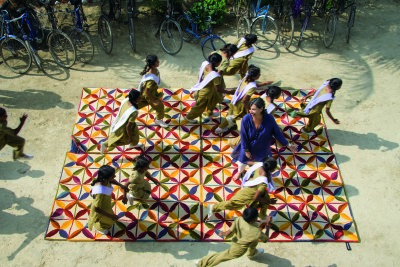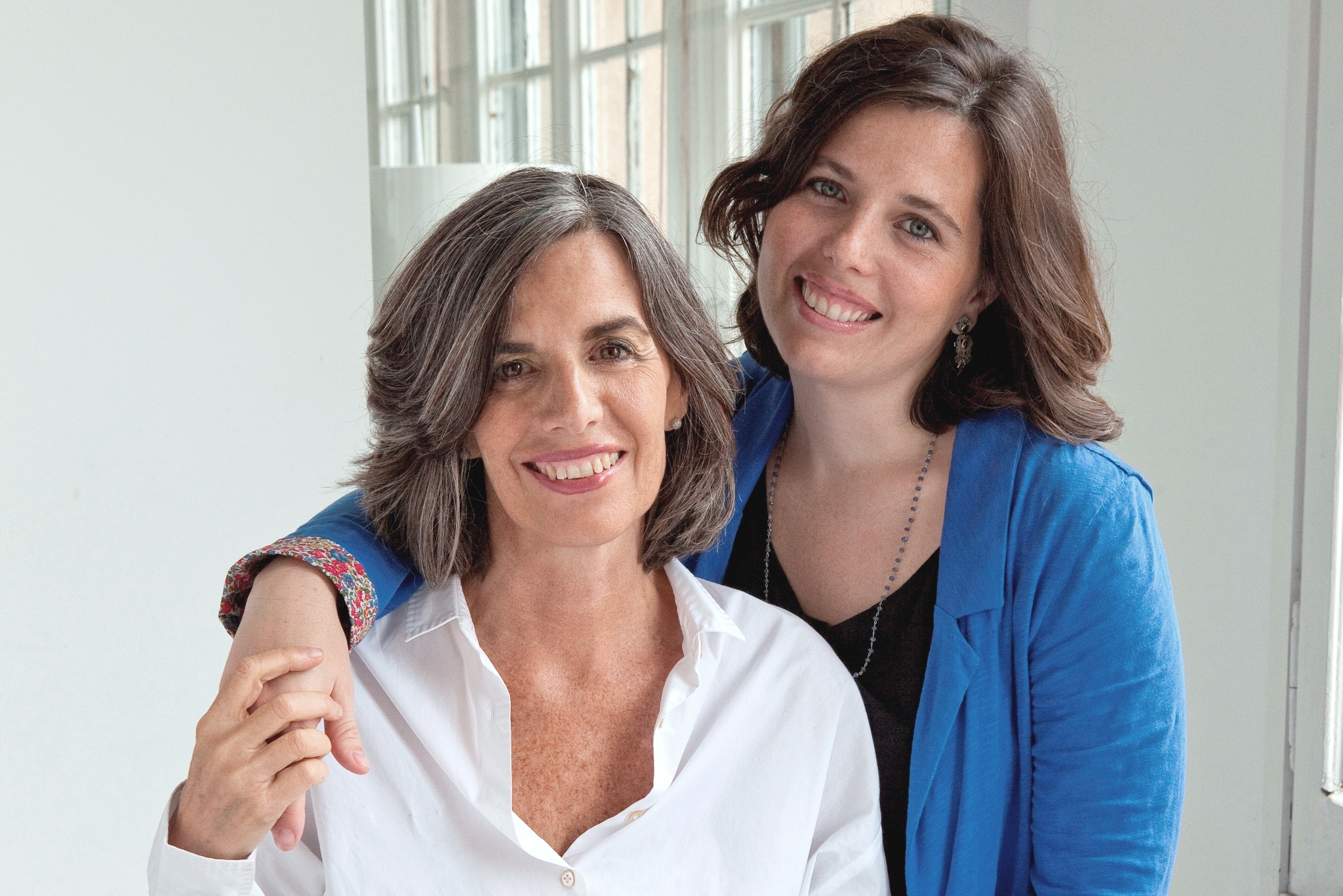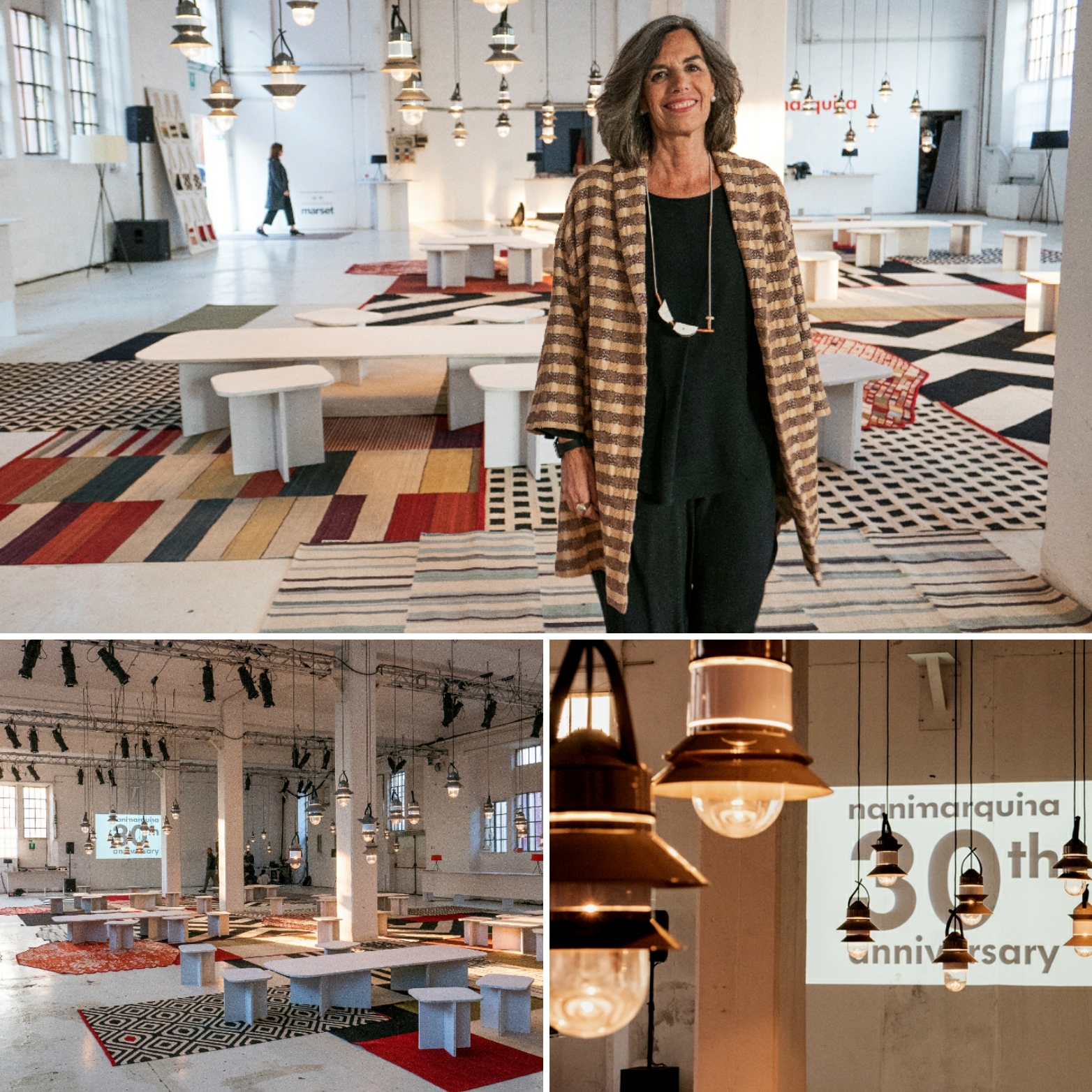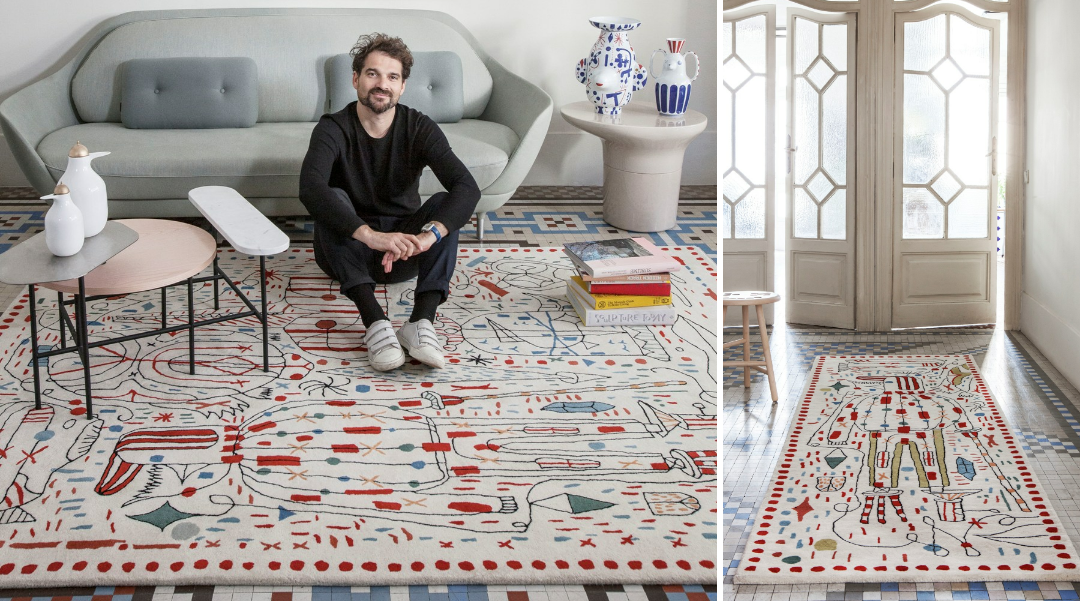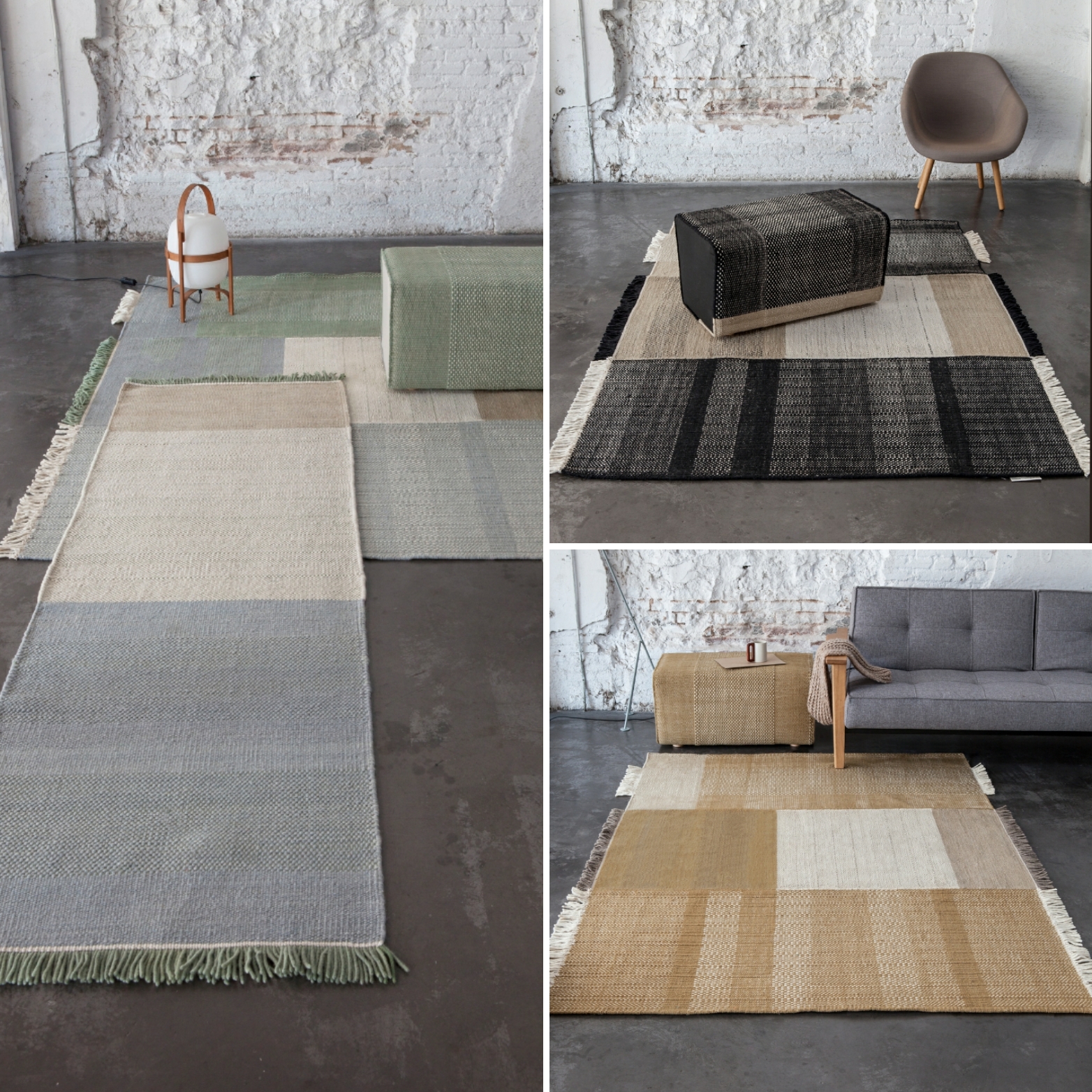A piece eventually forgotten and sometimes even despised. However, key for many interior decorators of the Western countries. For other cultures, on the other hand, far out of Europe, it is as basic as the roof of the house. We refer to the rug.
For the designer, entrepreneur and philanthropist from Barcelona Nani Marquina, daughter of the famous Rafael Marquina, this has always been clear. He is the pioneer of industrial design in Spain and FAD award in 1961 for its famous oil cruet.
“I wanted to design visually striking rugs
for the people to enjoy them”
Her constant search for innovation of techniques and materials make her to discover day by day the unlimited possibilities of craftsmanship. Nanimarquina is a brand in constant contact with the organic as well as worldwide precursor in the scene of contemporary rugs.
With headquarters in Barcelona and NYC, stores or official distributors in over 60 countries over the 5 continents and with a rug of more than 600 m2 covering the walls of the UN headquarters in Geneva since 2008. Nani Marquina has turned, since its creation as a company exactly thirty years ago, into an obligatory referent in the field of decoration of interior spaces.

80 rugs of Nani Marquina covered 600 m2 of the gigantic hall of the UN headquarters. General view of the room with the dome by Miquel Barceló.
Last April 5th during the Salone de Mobile in Milan, the brand celebrated its 30th anniversary and was honored as leading Spanish company in rugs with contemporary design.
“A rug is a house in the desert, a device loaded with an endless symbology that refers us to needs as primitive as bare land, protection and comfort, but which in turn tells us stories”
As a novelty of the Salone del Mobile of Milano 2017, Jaime Hayón has designed a dreamy, crazy collection with a great sense of humour where he includes turtles, lips, hands, stools, fish, man-birds… The elements have been distributed in such a way that the rug can be observed from different points of view.
Made with 100% Fiber and New Zealand Wool.
“Who better than Jaime and his unreal world full of characters, to celebrate our 30th anniversary? Someone who defies conventions, which evokes smiles, vitality and joy… because one does not celebrate years every day …”
One of the essential features of Nani’s rugs is that they are inspired by her trips around the world getting to know handcrafted techniques and objects for their elaboration as tools or looms. In fact, the rugs of the brand have been manufactured since 1993 in countries with a wide manufacturing tradition as India, Pakistan, Nepal and Morocco.
“We can learn aspects of cultures and traditions
of their places of origin through them.
Undoubtedly, it is a fascinating object”
“I love traveling to discover local handicrafts. In Burma, for example, I remember it was impossible to get a wool rug. All were made of bamboo and cotton fabrics as mats, “she recalls. “It is clear to discover how geography and climatology influence the rugs making, and is that in Burma cattle is not abundant.”

Collection of rugs of smooth colors with fibers of vegetal origin as the nettle and the jute or of animal origin as the silk and the wool.
Nani Marquina assures us that she has learned something from every place and every one of the weavers, as long as you show patience. However, her experience in Oaxaca, Mexico was particularly enriching.
“In this region they use mostly natural pigments. I learnt how the native people use the cochinilla, an insect parasitic of the cactus. From its dissected body they obtain the carminic acid, a very powerful red colorant and very easy to put in the textiles”
But Nani’s work, is not merely commercial. From her first trip to the Indian subcontinent, the Catalan designer was marked by the harsh living conditions prevailing in the region.
“If India brought me the ability to learn and improve my product, I should be able to give something back to the community as well”
At that time, back in 1994, she made contact with ‘Care & Fair’, a Hamburg organization that fights child slavery and helps artisans in the textile business in India, Pakistan and Nepal. “We collaborate with them to improve the quality of life and education of children in these regions. We also finance the Project Kala and the Amita School of Badohi, “says Marquina.
Made from organic fibers such as wool from Afghanistan and New Zealand, felts, silk, nettle, jute and mohair together with polyester and recycled gums, the Nanimarquina brand cannot be indifferent to the struggle to protect our environment.
“We try to boost the work with biodegradable or recycled products, for example, on the Bicycle rug, where we have researched the possible textures that some 140 bicycle air chambers from India can give us for a rug”
She uses Ecosheen, a multienzymatic product, biodegradable and free of harmful chemicals, whose virtue is enhanced by the vivid colors, the brightness and the softness in each washed fabric.
Rugs of maximum avant-garde experimental.
Designers, interior designers and artists of global status such as Ron Arad, Doshi Levien, Javier Mariscal, Eduardo Chillida, Ronan & Erwan Bourollec, Tord Bontjee, Sybilla, Neri & Hu have collaborated with Nani to ensure diversity of styles and experimentation with textures, materials and shapes. The result is a unique nanimarquina’s rug for each person, each space and every emotion.

By Nani Marquina have paraded designers, interior designers and artists of various backgrounds and trends
Do you choose the designers who will collaborate with you or are they the ones who have looked for you? Tell us about the process for an external designer to make one of your rugs.
Initially I started designing rugs myself, but in a short time, I developed a natural interest in editing work by other creators. The collaborations bring freshness, inspiration, experimentation and guarantees the diversity of styles in the catalog. The process of selection varies, that is to say, that the designers may contact us with a clear idea or we choose designers proposing some starting point from where to begin to create.
TRES comes from the three fibers used: New Zealand wool, felt and cotton, as well as its composition in three pieces joined. Its peculiarity resides in the production of three independent pieces in which different fibers predominate.
The industrial designer Andreu Carulla creates a trapezoidal pouf that is covered by part of the Tres rug.

Above: rugs in their latest production process; bellow giant patchwork of prints and colors created by New York designer Sybilla

Top left: rug of different heights inspired by the Shanghai streets designed by Neri & Hu (2016). Down left Mariscal reinterprets the classic Persian rug (1987). Photo
in the right: rug inspired by the traditional embroidery of the Indian community of Rabari designed by Doshi Levien (2014)
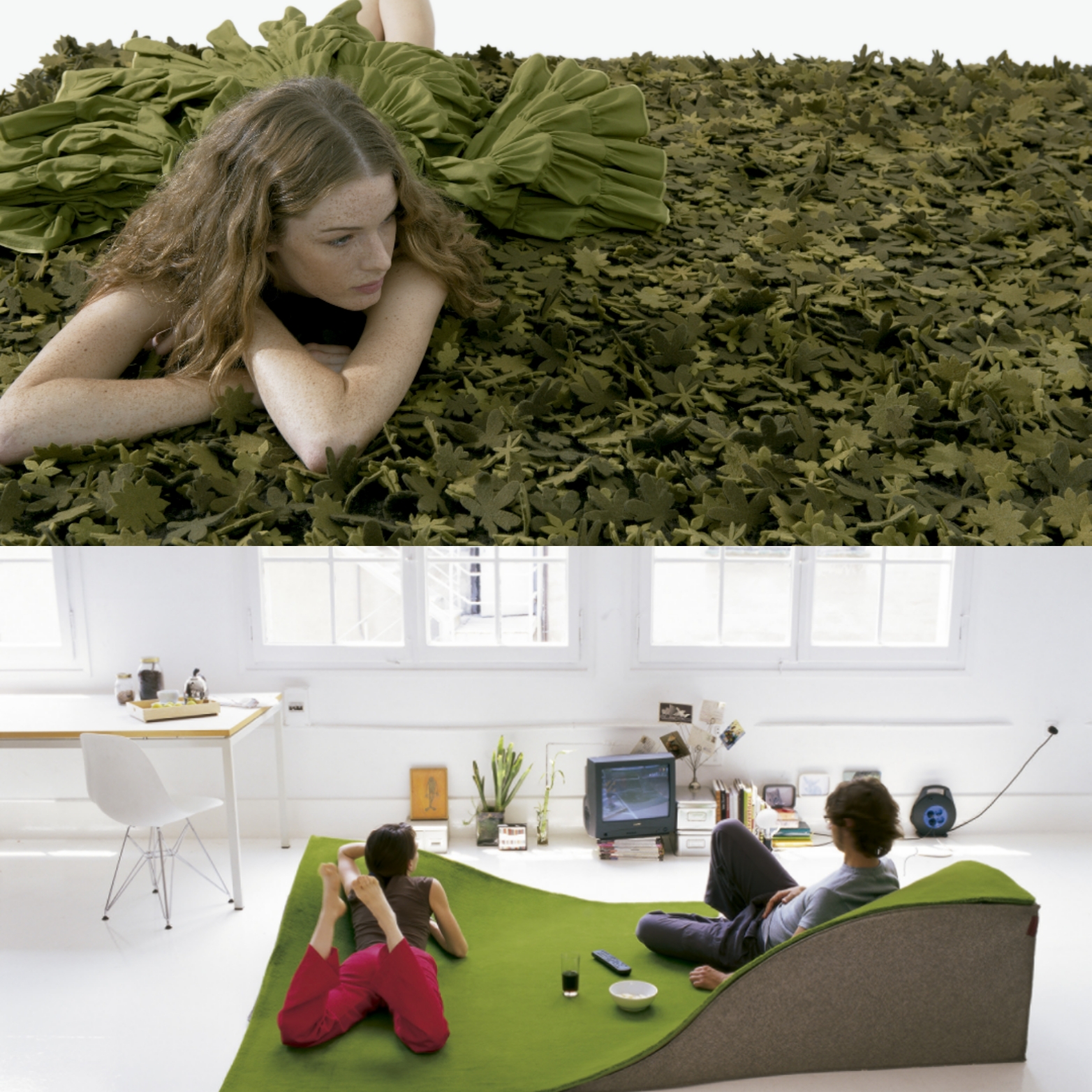
Above: photo of the three-dimensional rug Little Field of Flowers (2007) which have won several awards of design and designed by Tord Boontje. Down: Ana Mir i Emili Padros design the Flying carpet (2002) a rug that rises through wedges lined with natural felt.
What are the main inspirations of Nani Marquina in terms of design professionals and interior design?
I cannot deny that the works of Patricia Urquiola, Hella Jongerius, Konstantin Grcic or Michele de Lucchi have influenced me very positively to be who I am today.
How do you see the evolution of Interiorism? Do you think it is getting closer and closer to the multisensory art? Or are we going back to the traditional?
We return to the traditional, without any doubt. For necessity. I think that the more important the role of technology in our day-to-day life is, such as the mobile or the computer… the more we need to surround ourselves with craft objects, handmade. It is very different the link that is created with a manual object and unique that with one made in series.
What are the essential trade fairs that you never miss?
The Milan Furniture Show and the NYCxDESIGN. Year after year, we are there, they are indispensable in this sector.
What projects do you have in these moments that you can reveal to us?
We will bring soon new material to the level of the dhurries of Rajasthan, but experimenting with different innovative fibers. The dhurries are thick rugs of smooth fabric from northern India, you will see.
Personal pillars of an innate leader.
The founder of the brand also took the time to unveil some secrets of her personal life with Horse readers. We have asked for her preferences in different areas.
A book that marked you particularly?
Any by the Dutch industrial designer Hella Jongerius.
A movie?
The Sheltering Sky by Bernardo Bertolucci.
A trip that you have not done yet?
Mongolia.
And the one that you would repeat?
Sahara desert, because there is nothing like being in nature in such a pure state.
Your favorite color?
All earth colors.
Finally, do you buy art?
I buy handicrafts wherever I go: mainly ceramics, textiles and basketry, and you cannot imagine the great collection I have at home.
Images provided by nanimarquina
